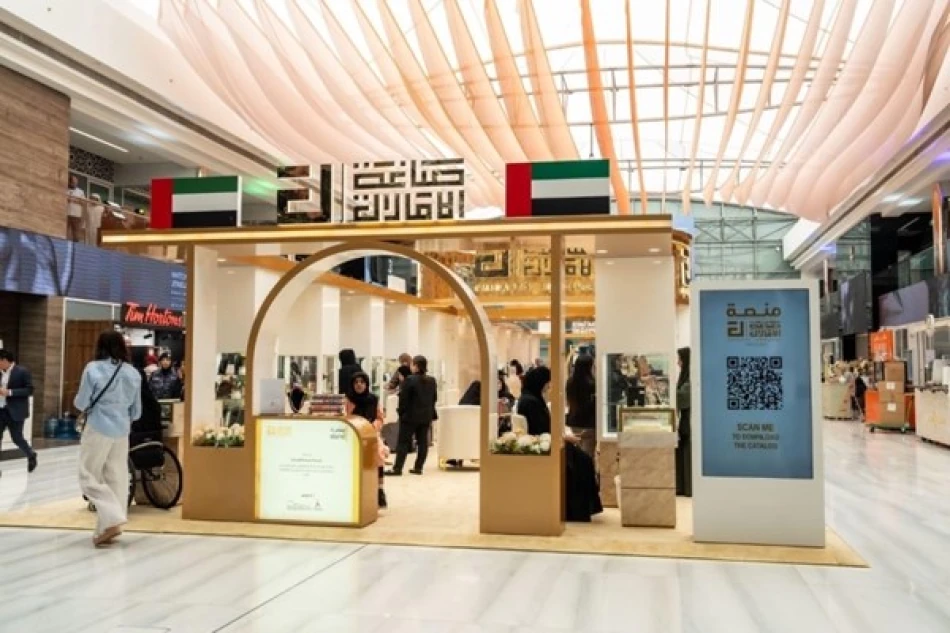
Emirati Jewelers Showcase Artistic Heritage on 'Sawwaghat Al-Emarat' Platform
UAE's Jewelry Platform Signals New Era for Local Creative Economy
The UAE's 'Saghat Al Emarat' platform has attracted 400 local jewelry designers since its launch, marking a significant shift in how the Emirates nurtures creative entrepreneurship. This initiative by Sharjah Chamber of Commerce shows the UAE's serious commitment to building a knowledge-based economy beyond oil, positioning local artisans to compete globally in the luxury goods market.
From Craft to Commerce: Building Local Talent
The platform serves as more than just a networking hub. It's become an incubator where traditional Emirati jewelry-making skills meet modern business practices. These 400 designers represent talent from across all seven emirates, suggesting a nationwide appetite for creative entrepreneurship that was previously untapped.
What makes this particularly interesting is the timing. As global luxury markets recover post-pandemic, regional players like the UAE are positioning themselves not just as consumers but as producers of high-end goods.
International Exposure Strategy
The platform's approach goes beyond domestic support. Sharjah Chamber actively sponsors designers at major international exhibitions, including Florence's International Crafts Fair and Tokyo's International Jewelry Fair. This isn't just about showing off – it's strategic market positioning.
For context, this mirrors Singapore's approach to creative industries in the 2000s, where government backing helped local designers gain international recognition and eventually build sustainable export businesses.
The Heritage-Modern Balance
What sets these Emirati designers apart is their focus on heritage-inspired pieces that blend traditional Arabic aesthetics with contemporary design. This positioning is smart – it creates a distinct brand identity in a crowded global jewelry market where authenticity commands premium prices.
Abdullah Sultan Al Owais, Chairman of Sharjah Chamber, emphasized that supporting 'Saghat Al Emarat' fits into a broader strategy to develop creative industries. The chamber also runs similar platforms for oud and perfumes, indicating a systematic approach to building the UAE's creative economy.
Market Implications
For investors and industry watchers, this represents something bigger than jewelry. The UAE is methodically building creative industries that can generate export revenue and high-skilled employment. The luxury goods market, particularly jewelry, offers high margins and global demand.
The platform's success – measured by growing membership and international exhibition participation – suggests there's real commercial potential here, not just cultural preservation.
Scaling Creative Entrepreneurship
Mona Sultan Al Suwaidi, who manages the platform, points out that many participants have successfully launched their own brands. This transition from hobbyist to entrepreneur is crucial for the UAE's economic diversification goals.
The platform provides comprehensive support: specialized workshops, training programs, business consultations, and organized visits to international exhibitions. This end-to-end approach addresses the typical gaps that prevent creative talent from becoming commercially viable.
What This Means Going Forward
The UAE's approach here is worth watching. By combining government support, international exposure, and focus on heritage-based differentiation, they're creating a template that other Gulf states might follow.
For the global jewelry industry, it means new competition from a region with deep pockets for marketing and development. And for the UAE, it represents progress toward the knowledge economy vision that's been central to national planning for over a decade.
The real test will be whether these 400 designers can build sustainable businesses that compete internationally. But the foundation – government support, international exposure, and clear market positioning – suggests they're serious about making this work.
Most Viewed News

 Layla Al Mansoori
Layla Al Mansoori






